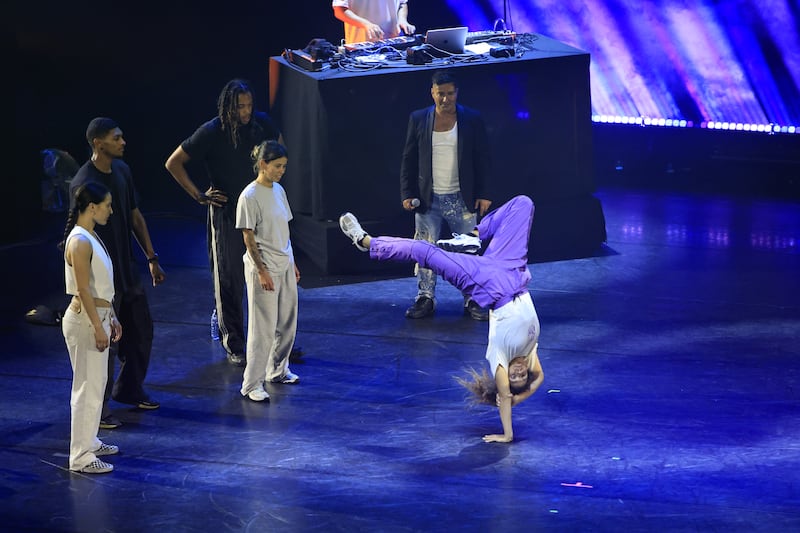What is Olympic breaking?
The new kid on the block, breaking will make its Olympic debut in Paris. For two days just before the close of the Games, competitors will showcase dizzying feats of athleticism and gravity-defying stunts in 60-second blasts of dance.
Breaking – sometimes known as breakdancing, although that term is now considered obsolete – is a style of street dance with its origins in the United States in the 1970s, particularly among African American and Latino communities in New York. Characterised by acrobatic moves and complex footwork performed to funk, breakbeats and hip-hop, it is one of the original four disciplines of hip-hop, along with DJing, graffiti, and MCing.
In competitions, breakers take part in dance “battles”, in which dancers take turns to show off their best moves. Vitally, every dance is different, there is no routine to follow, and b-boys and b-girls have no idea what they will be breaking to. The DJ alone dictates the music, setting the tone and pace for each battle while an MC – the master of ceremonies – hypes up the crowd and make sure the energy is pulsing.
Breaking was introduced at the Youth Olympics in Buenos Aires in 2018, massively boosting its popularity and leading the way to its inclusion in Paris 2024.
READ MORE
When and where is the breaking happening?
Breaking will take place over two days, with women competing on Friday, August 9th, while the men will do battle on Saturday 10. Battles will happen at the Parc Urbain, built around the Place de La Concorde. The heart of Paris’ centre for urban sport and culture, it will also host 3×3 basketball, street and park skateboarding and BMX freestyle.
Who will take part?
Those taking part are not known as competitors, athletes or even dancers, but b-boys and b-girls – and are often known only by the b-boy or b-girl name. There will be 32 in total, 16 b-girls and 16 b-boys.
What is the format?
There is a round robin stage, where the 16 breakers are split into four groups and dance, for a minute each, against everyone in their group. The two best from each group progress to the knockouts. Most major breaking competitions have two or three throw downs in each battle, increasing to five in the final.

How is it scored?
A panel of judges score each round and each battle, marking breakers’ performances based on five criteria, each worth 20% of the final score..
Technique: Scores are based on athleticism, body control, dynamics, space control, form, lines and shape, as well as whether certain moves have been executed correctly.
Vocabulary: The variation and quantity of moves, with a diverse set of moves in multiple positions needed for a top score.
Execution: Essentially how “clean” a move is, and how distinct one move is from the next. They should flow, but not blend.
Musicality: It’s a dance, not a routine – judges will be looking at how the breaker feels and express the music.
Originality: The wow moment, how is the breaker making the dance their own.
Unlike other judged sports, breakers face off in one-on-one battles to see who’s best – there is no leaderboard.
Instead of giving each criteria a score, judges – usually respected members of the breaking community – use a digital slider to slide towards a breaker in each category.
What are the moves?
There are too many to count, but breakers combine three basic elements into their routine:
Toprock: Moves made while the breaker is standing up, consisting mainly of hand movements and nimble footwork. Most throw downs start with toprock – in breaking’s roots, it was used as a way to tell other dancers to get out of the way.
Downrock: Perhaps the moves most associated with breaking, performed on the floor. Breakers will spin on practically any part of their bodies at lightning speed, combining the moves with crafted footwork, drops and transitions.
Freeze: When a breaker performs a total stop – usually in an acrobatic, seemingly impossible position, often signifying the end of a sequence.
Is it going to be the best show in Paris?
You’d better believe it. As German b-girl Jilou put it: “We’re going to bring a party to the Olympics, because who else comes with a DJ, right?”















